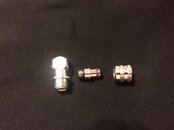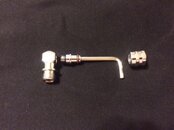CuzzA
Wetwork for Hire
Yes, the garden hose analogy was simply to give a visual. Remember though, the inside diameter of a scuba hose is very small, ~3/16-1/4". So in theory it wouldn't take much to crimp it shut. Obviously there's a lot more pressure to overcome. I'll test tomorrow in my pool by pressing the purge on my reg and see if I can't shut of the flow by crimping the hose.






